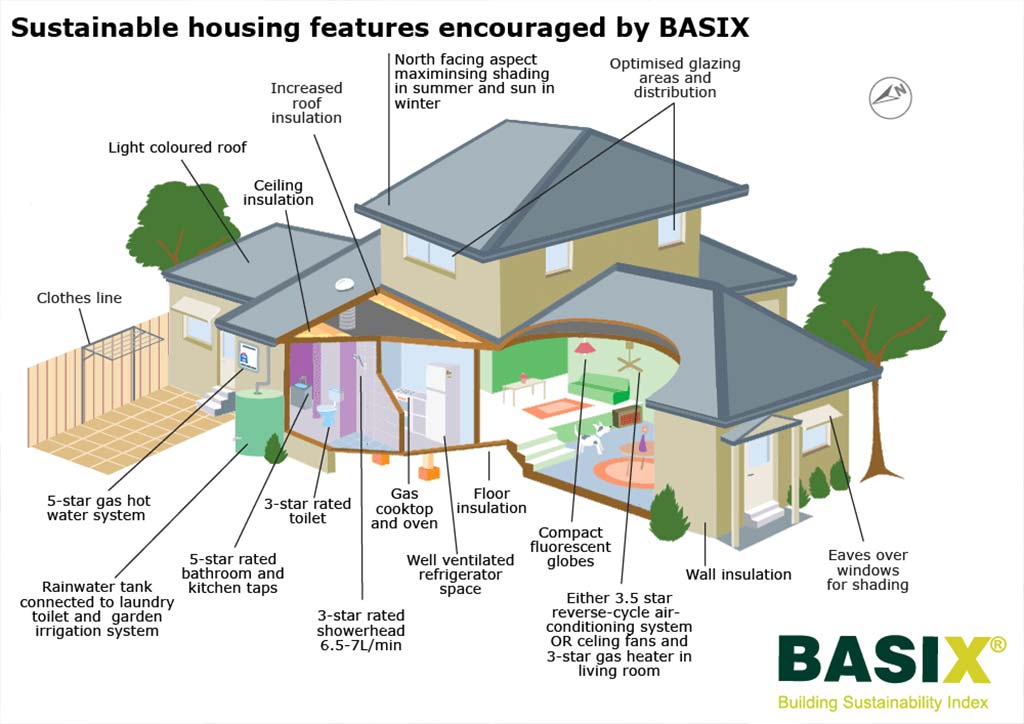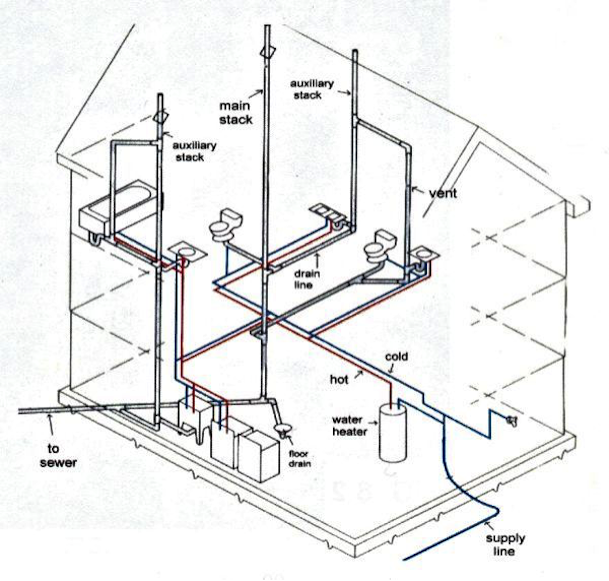How do you actually feel on the subject of Plumbing Installation 101: All You Need to Know?

Understanding just how your home's plumbing system functions is essential for every house owner. From delivering clean water for alcohol consumption, food preparation, and showering to securely removing wastewater, a well-maintained plumbing system is important for your household's health and comfort. In this extensive guide, we'll explore the elaborate network that comprises your home's plumbing and offer tips on maintenance, upgrades, and dealing with common problems.
Introduction
Your home's plumbing system is more than just a network of pipes; it's a complex system that guarantees you have accessibility to tidy water and efficient wastewater removal. Knowing its parts and just how they interact can aid you protect against pricey fixings and make certain whatever runs smoothly.
Basic Components of a Pipes System
Pipelines and Tubes
At the heart of your plumbing system are the pipes and tubing that bring water throughout your home. These can be made of various materials such as copper, PVC, or PEX, each with its benefits in regards to toughness and cost-effectiveness.
Components: Sinks, Toilets, Showers, etc.
Fixtures like sinks, bathrooms, showers, and tubs are where water is used in your house. Understanding how these components connect to the plumbing system aids in detecting issues and preparing upgrades.
Shutoffs and Shut-off Factors
Valves manage the flow of water in your pipes system. Shut-off shutoffs are essential throughout emergencies or when you require to make repair work, allowing you to separate parts of the system without interfering with water circulation to the entire house.
Water System
Key Water Line
The main water line connects your home to the metropolitan supply of water or an exclusive well. It's where water enters your home and is dispersed to different fixtures.
Water Meter and Stress Regulatory Authority
The water meter procedures your water usage, while a stress regulatory authority guarantees that water flows at a secure pressure throughout your home's plumbing system, preventing damages to pipes and components.
Cold Water vs. Warm water Lines
Recognizing the distinction in between cold water lines, which supply water straight from the main, and hot water lines, which lug heated water from the water heater, aids in fixing and planning for upgrades.
Drain System
Drain Pipes Pipeline and Traps
Drain pipelines bring wastewater far from sinks, showers, and toilets to the sewage system or sewage-disposal tank. Catches protect against drain gases from entering your home and also trap particles that could cause obstructions.
Ventilation Pipelines
Air flow pipes permit air into the water drainage system, avoiding suction that can slow down water drainage and cause traps to vacant. Proper ventilation is vital for maintaining the integrity of your pipes system.
Relevance of Proper Drain
Making certain correct drain stops back-ups and water damage. Consistently cleaning drains pipes and keeping catches can protect against costly repairs and prolong the life of your pipes system.
Water Heating System
Kinds Of Hot Water Heater
Hot water heater can be tankless or traditional tank-style. Tankless heaters warm water as needed, while storage tanks keep warmed water for immediate use.
Updating Your Pipes System
Factors for Updating
Upgrading to water-efficient components or replacing old pipes can enhance water top quality, decrease water expenses, and raise the worth of your home.
Modern Plumbing Technologies and Their Benefits
Explore innovations like smart leakage detectors, water-saving toilets, and energy-efficient water heaters that can conserve cash and minimize ecological effect.
Expense Factors To Consider and ROI
Compute the ahead of time expenses versus long-lasting financial savings when considering pipes upgrades. Many upgrades pay for themselves through decreased utility expenses and less repair services.
Just How Water Heaters Attach to the Pipes System
Recognizing just how water heaters connect to both the cold water supply and warm water circulation lines aids in diagnosing issues like insufficient hot water or leakages.
Upkeep Tips for Water Heaters
Regularly purging your water heater to remove debris, examining the temperature level setups, and examining for leakages can expand its life-span and boost power performance.
Usual Plumbing Problems
Leaks and Their Causes
Leaks can take place as a result of aging pipes, loosened installations, or high water stress. Addressing leaks without delay protects against water damages and mold and mildew development.
Blockages and Blockages
Clogs in drains and bathrooms are typically triggered by flushing non-flushable items or a buildup of oil and hair. Utilizing drain screens and bearing in mind what goes down your drains pipes can protect against blockages.
Signs of Pipes Issues to Watch For
Low water stress, sluggish drains pipes, foul odors, or uncommonly high water bills are indicators of potential pipes troubles that need to be resolved quickly.
Pipes Upkeep Tips
Routine Evaluations and Checks
Schedule annual pipes assessments to capture concerns early. Seek indications of leaks, corrosion, or mineral build-up in faucets and showerheads.
DIY Upkeep Tasks
Basic tasks like cleansing faucet aerators, checking for toilet leakages using dye tablets, or insulating exposed pipelines in cold climates can avoid major plumbing concerns.
When to Call a Specialist Plumber
Know when a pipes concern requires professional proficiency. Trying intricate fixings without correct knowledge can lead to more damages and greater repair service costs.
Tips for Reducing Water Usage
Straightforward routines like repairing leaks promptly, taking shorter showers, and running full lots of laundry and dishes can conserve water and lower your utility costs.
Eco-Friendly Plumbing Options
Think about lasting plumbing products like bamboo for floor covering, which is durable and environmentally friendly, or recycled glass for countertops.
Emergency situation Preparedness
Steps to Take Throughout a Plumbing Emergency
Know where your shut-off shutoffs lie and how to switch off the water system in case of a ruptured pipeline or major leakage.
Significance of Having Emergency Situation Get In Touches With Useful
Maintain get in touch with information for regional plumbers or emergency situation services conveniently available for fast action during a plumbing situation.
Ecological Impact and Conservation
Water-Saving Fixtures and Devices
Installing low-flow faucets, showerheads, and toilets can significantly reduce water use without compromising performance.
DIY Emergency Situation Fixes (When Appropriate).
Momentary fixes like using duct tape to patch a leaking pipe or positioning a pail under a dripping faucet can decrease damage up until a specialist plumbing gets here.
Conclusion.
Comprehending the makeup of your home's plumbing system empowers you to preserve it successfully, conserving money and time on fixings. By following regular maintenance routines and remaining educated about contemporary pipes innovations, you can guarantee your plumbing system operates effectively for several years to find.
The Anatomy of Your Home s Plumbing System
Understanding the anatomy of your home s plumbing system is essential for any homeowner. It not only helps in identifying potential issues but also facilitates effective communication with professionals when repairs or upgrades are needed. Your home s plumbing system is more than just pipes and faucets; it s a complex network that ensures the efficient and hygienic flow of water in and out of your house. In this blog, we ll dissect the crucial components of your home s plumbing system. For those in Antelope Valley, Brock Plumbing is your trusted partner for all your plumbing needs, ensuring your system functions smoothly and efficiently.
Water Supply System
Main Water Line: This is where your home s plumbing system begins. The main water line connects your home to the public water supply or a private well. Pipes and Shut-off Valves: Pipes distribute water throughout your home. Shut-off valves are crucial for controlling the flow of water and making repairs without shutting off the entire system. Drainage System
Drain Pipes: These pipes carry waste and water away from sinks, toilets, and showers. Vents: Vents allow sewer gases to escape and help maintain proper pressure in the drainage pipes, ensuring efficient flow of wastewater. Traps: Every fixture has a trap, a U-shaped pipe that holds water and prevents sewer gases from entering your home. The most common is the P-trap under sinks. Fixtures and Appliances
Fixtures and appliances are the most interacted with parts of your plumbing system. They include sinks, toilets, showers, dishwashers, and washing machines. Each fixture and appliance has its own supply and drainage connection, ensuring they receive clean water and can dispose of wastewater effectively.
Water Heating System
Your water heater is a crucial component, providing hot water to various fixtures and appliances in your home. It can be tank-based or tankless, with each type having its own set of advantages and maintenance requirements. Regular maintenance is essential to ensure efficient operation and extend the lifespan of the unit.
Sump Pump
In areas prone to flooding or with high water tables, a sump pump is an essential part of the plumbing system. It s installed in the lowest part of your basement or crawlspace and pumps out water that accumulates, preventing flooding and protecting your home from water damage.
Septic System
Homes that are not connected to a municipal sewer system have a septic system and an underground wastewater treatment structure. Understanding how to maintain your septic system is crucial to prevent backups, odors, and early system failure.
Conclusion
Your home s plumbing system is a complex and essential network, ensuring the efficient and hygienic flow of water in and out of your property. Understanding its key components helps in maintaining it properly and identifying issues before they escalate into major problems. For residents in Antelope Valley, Brock Plumbing is dedicated to providing top-notch services, ensuring that every part of your plumbing system is in perfect working order. Trust our team of professionals to handle all your plumbing needs, ensuring your home remains comfortable, safe, and well-maintained.
https://brockplumbinganddrains.com/blog/the-anatomy-of-your-homes-plumbing-system/

We had been made aware of that article about Plumbing Installation 101: All You Need to Know through a friend on our other web property. Are you aware of anybody else who is curious about the niche? Why not promote it. Thank you for being here. Don't hesitate to stop by our website back soon.
Click